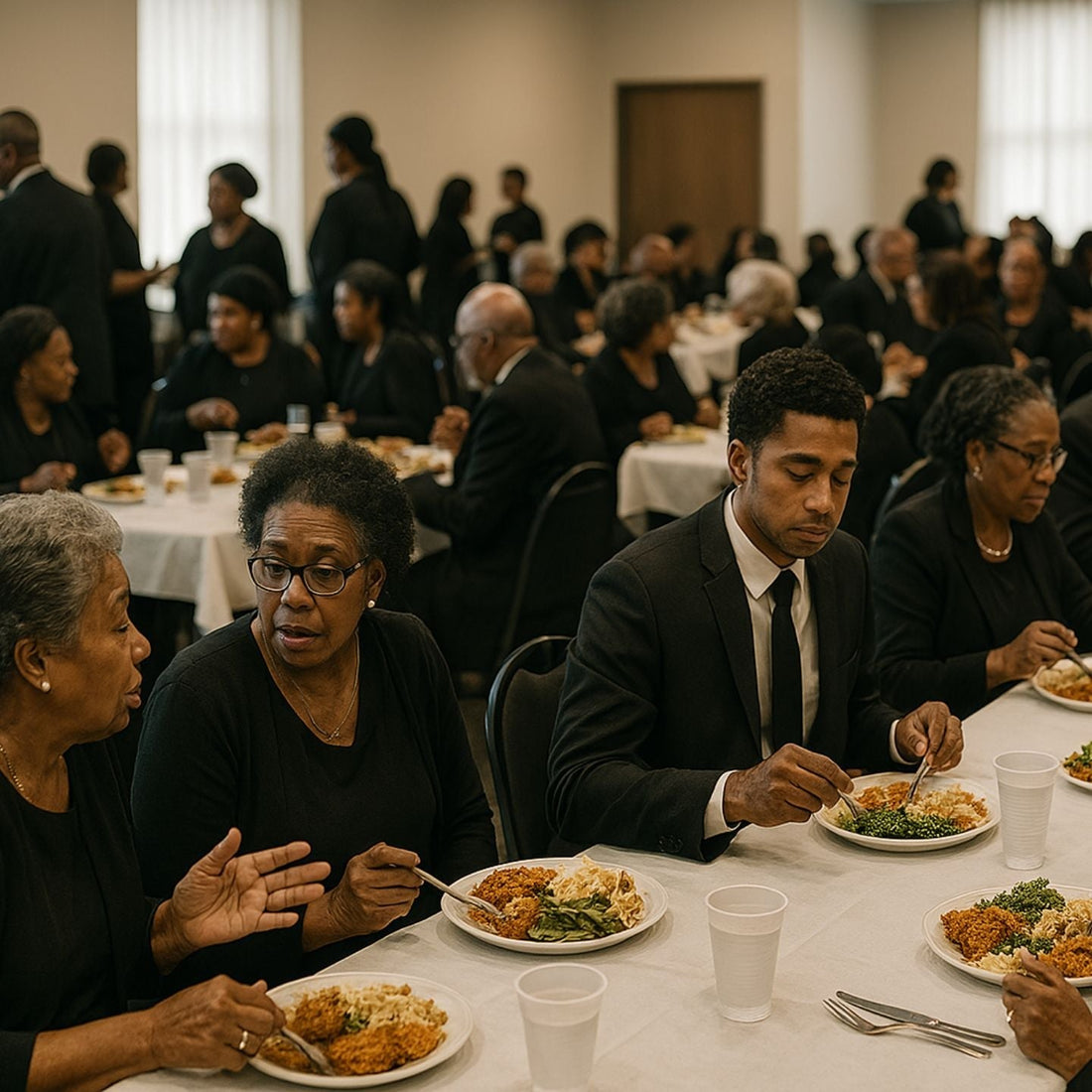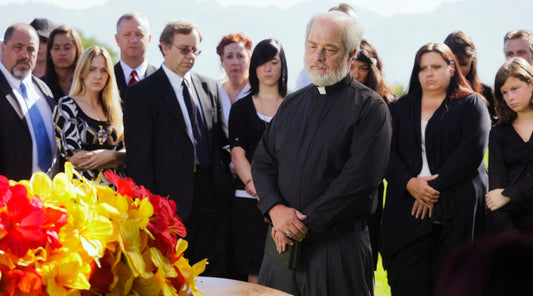
Everything You Need to Know About a Funeral Repast or Repass
Losing a loved one is never easy, and it’s a time when family and friends come together to show support and comfort each other. After the funeral service, there’s another important tradition that takes place—the funeral repast, sometimes called a repass. A funeral repast is a meal shared by family and friends after the funeral, where people gather to remember the deceased, share memories, and offer each other comfort. This meal is often hosted at a family member’s home, a church hall, or sometimes a local restaurant, depending on what works best for the family.
The funeral repast is a vital part of the grieving process. It provides a space for people to reflect on the deceased’s life and come together in support of each other. It’s a chance to step away from the sadness of the funeral and spend time with others who are also grieving, helping everyone feel a sense of closeness and peace.
In this blog, we’ll go over everything you need to know about funeral repasts, including what they are, why they are important, and what to expect when attending or planning one. If you're organizing a repast or simply want to understand this tradition better, this guide will help.
What is a Funeral Repast or Repass?

A funeral repast, also called a repass, is simply a meal served after the funeral service. It is a chance for family and friends to come together, share food, and continue supporting each other as they remember the person who has passed away. While a funeral service focuses on honoring the deceased, a funeral repast is a more relaxed gathering where people can chat, reflect, and find comfort in the company of others.
The meal at a repast may vary, but it is usually informal and centered around providing comfort. People may share stories, reminisce about the deceased, or simply enjoy one another’s company. It’s not about having a fancy meal, but more about bringing people together during a difficult time.
Why is a Funeral Repast Important?

The main purpose of a funeral repast is to give people a chance to come together and continue the grieving process in a more relaxed setting. After a formal and often emotional funeral, the repast allows attendees to take a step back, share food, and have meaningful conversations. It’s a time to comfort one another and find strength in community.
A repast also gives family and friends a chance to celebrate the deceased's life in a less formal setting. This can be done through sharing memories, telling stories, or talking about the good times spent with the person who has passed. It's a time to remember the life of the deceased, not just their passing.
This tradition helps people heal together, showing that the support of friends and family can help in moving through grief.
Funeral Repast vs. Reception: What’s the Difference?
Sometimes, people confuse a funeral repast with a funeral reception, but they are a little different. A funeral reception is usually more formal and might include speeches, music, or other planned activities. It’s often held at a banquet hall or a restaurant, with a more structured program to celebrate the deceased.
A funeral repast, on the other hand, is generally more informal. It’s focused on sharing a meal with loved ones and providing comfort in a simple, relaxed environment. While there may be speeches or toasts, the repast tends to be more about spending time with others and finding comfort in each other’s company.
Who Attends a Funeral Repast?

Anyone who attended the funeral is welcome to join the repast, including close family members, friends, and anyone who had a meaningful connection to the deceased. It’s a chance for people to continue the support they showed at the funeral and share their thoughts or memories in a less formal setting.
It’s common for family members to invite others, and some families even extend invitations to neighbors or people from their community who may want to pay their respects. Children are also welcome at the repast, as it can be a valuable opportunity for them to understand the grieving process and experience the importance of family and community.
The goal is to bring people together so that everyone can feel supported and connected during this challenging time.
How to Plan a Funeral Repast

Planning a funeral repast doesn’t need to be stressful, but there are a few key things to keep in mind. The first thing to decide is the location. This can be at a family member’s home, a church hall, or even a community center. Some families choose to host the meal at a restaurant or catering hall if they expect a large group of people.
Next, you’ll need to think about the food. The meal at a funeral repast doesn’t need to be fancy. It should be comforting and filling, offering people a chance to relax and enjoy the company of others. Common food choices include sandwiches, casseroles, fried chicken, salads, and finger foods. Desserts like cakes, cookies, and pies are often served as well.
You don’t need to plan a huge event—just enough to provide for the people attending. The focus is on offering food and comfort, not putting on an extravagant display. The goal is to create a warm, welcoming environment for people to grieve and support each other.
Common Foods for a Funeral Repast

The food at a funeral repast can vary depending on cultural traditions and personal preferences, but comfort food is typically the star. Casseroles, fried chicken, potato salad, and sandwiches are all popular choices. Simple, hearty dishes work well because they provide comfort and are easy for large groups of people to enjoy.
Desserts like cakes, cookies, or pies are often served to bring some sweetness to the occasion. Some families may serve dishes that were favorites of the deceased, honoring their memory with a meal they loved.
In some cultures, certain foods have symbolic meanings. For example, in some cultures, bread and salt may be served to guests as a symbol of hospitality, while others may have specific traditional meals that are believed to bring comfort during mourning.
Etiquette for Attending a Funeral Repast
Attending a funeral repast comes with its own set of unwritten rules, and it’s important to be respectful of the family and the mood of the gathering. It’s a time for sharing memories and offering comfort, so be sensitive to the emotions of others. Conversations should be kind and thoughtful, and if you’re unsure what to say, a simple “I’m sorry for your loss” is always appropriate.
It’s also respectful to offer to help with food preparation, setting up, or cleaning up after the meal if you can. This is a great way to show your support for the family and lighten their load during a difficult time.
When it comes to behavior, keep in mind that the repast is a time for reflection, not celebration. While some people may feel more relaxed during the gathering, it’s important to remain considerate of others who may still be processing their grief.
Conclusion
A funeral repast is an important tradition that helps family and friends come together after a funeral to reflect on the deceased’s life and offer comfort to each other. It is a time to share a meal, tell stories, and celebrate the life of the person who has passed away. While a funeral can be a solemn occasion, the repast provides a chance for people to relax, support one another, and heal together.
If you’re planning a funeral repast or have questions about the process, feel free to reach out to us for more information. You can contact us at (800) 950-4042 orinfo@trustedcaskets.com. Visit our website at Trusted Caskets to view our full range of caskets and start the process today.


